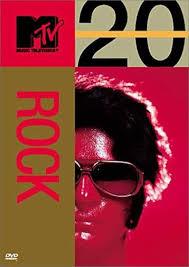The Evolution and Influence of MTV Channels

Introduction
MTV channels have long been iconic in the music and entertainment industry. Since its launch in 1981, MTV has evolved from a music video platform to a multi-faceted media enterprise that resonates with youth culture worldwide. Understanding the development and current state of MTV channels is vital, as they continue to shape popular culture and influence trends in music, fashion, and lifestyle.
Evolution of MTV Channels
MTV debuted as a revolutionary channel focused on music videos, showcasing a new form of art that appealed to young audiences. Pioneers like ‘Video Killed the Radio Star’ marked the channel’s position in an innovative wave of entertainment history. As the years progressed, MTV diversified its content to include reality television, scripted series, and informational programming, expanding its reach beyond music. In recent years, channels under the MTV brand, such as MTV2, MTV Classic, and MTV Live, have emerged, further illustrating the intent to cater to diverse audience interests.
Current Programming and Audience Reach
Currently, MTV channels offer a variety of programmes, ranging from hit shows like ‘Teen Mom’ and ‘Jersey Shore’ to music competitions like ‘The Challenge.’ The channel also regularly airs award shows, music specials, and documentaries tackling social issues significant to younger generations. As of 2023, MTV channels have a global footprint, reaching audiences in over 180 countries while adapting content to fit regional tastes. With an emphasis on digital platforms, MTV has embraced streaming opportunities, making its content accessible to a broader audience.
Impact on Youth Culture
MTV’s influence extends beyond entertainment—it shapes youth culture and social perspectives. Through music, fashion, and lifestyle programming, it impacts how young people engage with their identities and societal issues. For example, MTV has played a critical role in various social movements and awareness campaigns, addressing topics like mental health, body positivity, and inclusivity. The channel’s ability to align with cultural shifts allows it to maintain relevance and foster connections with its audience.
Conclusion
The MTV channels remain at the forefront of music and entertainment by continuously evolving to meet the changing needs and preferences of viewers. While the landscape of television and music consumption is rapidly changing, MTV’s ability to adapt positions it as a significant player in shaping future trends. As it investigates new formats and technologies, the channels are likely to continue influencing generations to come, ensuring their legacy in the media landscape.
